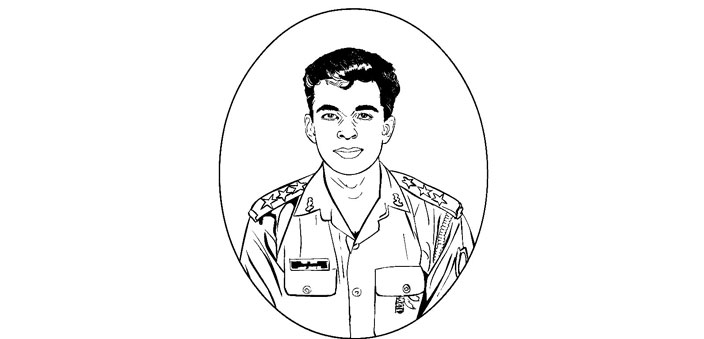A valiant and true hero (1975-1999)
Anuj Nayyar was born on 28 August 1975 in Delhi. His father, S.K. Nayyar, was a visiting Professor at the Delhi School of Economics and his mother, Meena Nayyar, worked as Librarian at the South Campus of the University of Delhi. Anuj studied at the Army Public School, Dhaula Kuan, New Delhi. He was a bright student and was good in sports too. He joined the National Defence Academy (NDA) and was commissioned into 17 Jat battalion in June 1997.
In 1999, the Pakistani military personnel had intruded into the Kargil area. The Indian Army used to vacate these posts during winter and the Pakistanis took advantage of it. The intruders were spotted by two shepherds in Batalik on 3 May and they reported it to the local Army authorities. A patrol under Captain Saurabh Kalia, sent to investigate, did not return. Accurate shelling by Pakistan led to the destruction of the ammunition depot at Kargil on 9 May. It was established that the intrusion was over an area of about 150 km and 20 km deep. A large force was moved to Kargil to evict the intruders. 17 Jat battalion moved from western Kashmir Valley to Kargil on 26 May. Dras was cleared by 4 July and it was now the turn of Mushkoh Valley. The enemy had well dug in positions on all the dominating heights of Mushkoh Valley and the most prominent peak 4875, also called Pimple II, gave the enemy a clear view of 30 km of the Srinagar-Leh highway. It was located on the west side of Tiger Hill. The first task allotted to the unit was to clear Point 4540 which was completed by 30 May. They were then ordered to capture Feature Pimple II on Point 4875.
Battalion 17 Jat decided to go ahead with the attack on 6 July without waiting for air support. The Commanding Officer decided to attack on two axis in two phases. All movement had to be at night. Ammunition, water and rations were carried forward over a period of four nights by 234 soldiers. Pimple I, part of the objective, was captured on 3 July and attack on Pimple II was launched on 6 July, with Anuj’s platoon leading. The company commander, Major Ritesh Sharma, was injured in the initial shelling by the enemy and Anuj assumed command of the company. Anuj’s group consisting of seven soldiers located four enemy bunkers. The group was constantly under enemy fire and Anuj hit the ground. His men thought that he had been hit but it was not so. He crawled forward and destroyed the enemy by lobbing a grenade. He killed nine enemy soldiers and assisted by Sepoy Surinder Singh destroyed three enemy bunkers. Surinder was hit and killed on the third bunker. While attacking the last bunker, an enemy rocket-propelled grenade fell directly on Anuj. Disregarding his injuries, he continued to lead his men to clear the last bunker. He succumbed to his injuries only after clearing Point 4875. His indomitable courage and leadership resulted in clearing the target. All the six soldiers in his group were killed. It was one of the toughest battles of the campaign and 17 Jat had suffered the highest casualties of any unit in the Kargil War. The unit had lost two officers, one JCO and 34 soldiers. They had fought to the last man.
Anuj’s body was brought home the next day with full State honours. The tears in the eyes of his mother overflowed and her sobs rent the air. She was clutching Anuj’s photograph and trying to console the equally upset fiancée of Anuj. The two had been engaged for a year and were planning to get married in September. The body was later taken to the Cantonment and cremated with full military honours.
Anuj’s heroics were widely publicised in the print media and in the film Kargil produced by J.P. Dutta. Several books and tele-films were made to depict Anuj’s contribution to the Army. Anuj was posthumously awarded the MVC which was received by his mother on 15 August 1999.

